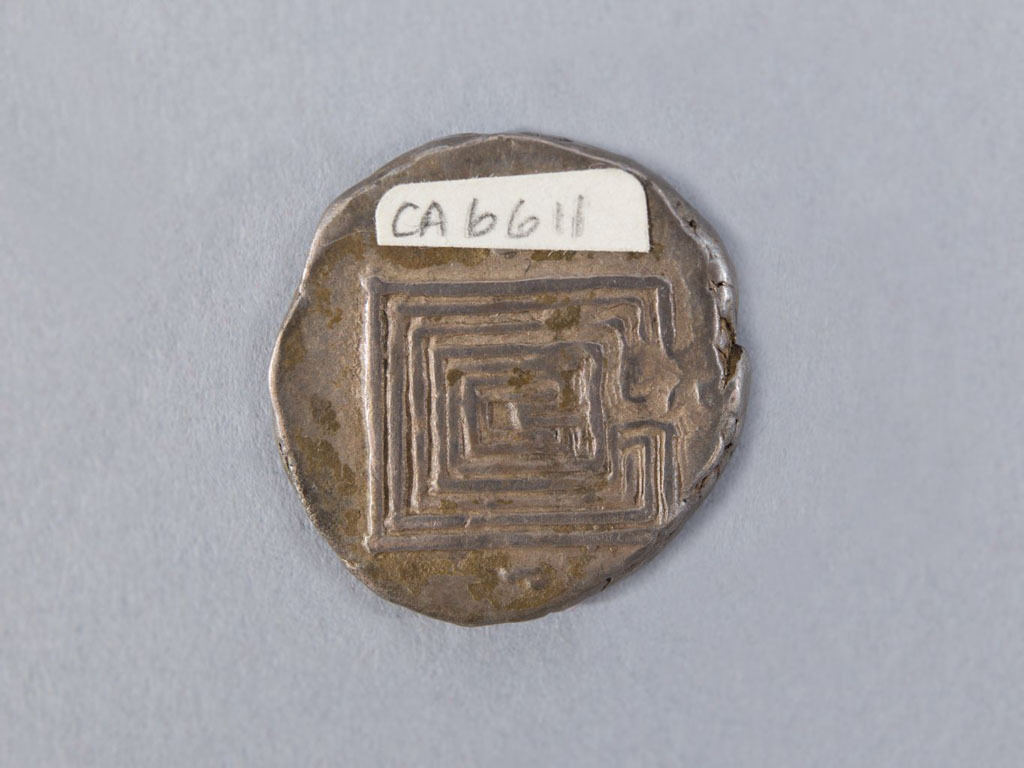A slightly off-center rectilinear labyrinth appears on the
reverse of this coin. The labyrinth was a common motif on coins that were
minted in Knossos, Crete, especially during the Classical period (480–323 BCE).
Knossos was the legendary location of the palace of King Minos and the home of
the Minotaur, who had the head and tail of a bull, but the body of a man. In
mythology, rather than sacrificing a white bull to the Greek god Poseidon, King
Minos kept it for himself. As punishment, Poseidon had Minos’s wife Pasiphae
consumed with desire for the bull, and their offspring was the Minotaur. As he
grew, the Minotaur began eating humans, so following the advice of the Oracle
of Delphi, the Minotaur was confined to an elaborate labyrinth, designed by the
inventor Daedalus to keep all who entered trapped. Eventually the Minotaur was
killed by the Athenian hero, Theseus, and the labyrinth remained an enduring
symbol of Knossos.
On the obverse, there is a female head in profile facing to
the right. She wears a rolled headband or circlet. In the past she has been
identified as Ariadne, the daughter of King Minos who helped Theseus by
providing him with a sword to fight the beast and thread to find his way out of
the labyrinth. Alternatively it could be Hera, the queen of the Olympian gods,
who appears on coins of Knossos as well because of her marriage to Zeus,
Demeter, or Kore (also known as Persephone). The head on this coin shows heavy
wear with its smoothed details and rounded edges making it difficult to
determine her identity.
Knossos and other major Cretan cities began issuing coins
around 470 BCE. This coin has a weight consistent with that of other silver
stater coins from Knossos in the Classical period of around 11 grams. Two
control marks, or letters related to the manufacturing of the coin, are visible
today. An Ι (iota, the letter “I”) and Ρ (rho, the letter “R”). Similar coins
also have a B (beta, the letter “B”) above the entrance to the labyrinth.
Although there is one cross-bar of something partially preserved in that
location on this coin, it is not preserved enough to confirm it is a B. It is
thought that BPI (Bri) is used on these coins to represent ΒΡΙΩΝ (“Brion”), the
name of a magistrate around 350 BCE in Knossos.

